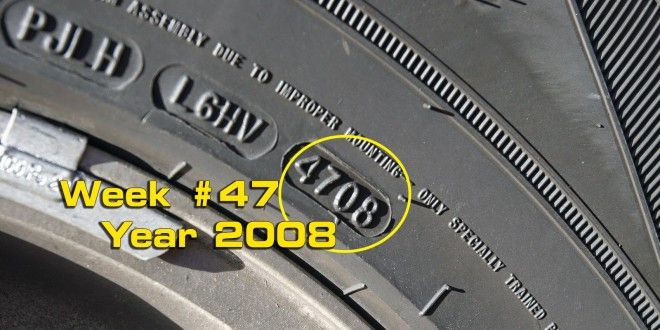Are you having difficulties reading the DOT number of your tires? Do you want to know how to read tire date codes? If you have lost the receipt of your purchase, you might be having difficulties knowing the exact age of your tires. This issue is common and you can find the solution from your tires. Just observe your tires, you will get the answer.
*Picture Copyright: UTires.com
How to Read Tire Date Codes?Whether you are financing your tires or purchasing them, it is important to understand how to read tire date codes. The numbers are present on tires only. You just need to know how to get them. You might have difficulties while reading codes on old tires. Keep reading to know how old your tire is.
Ways to Get Your Tires DOT NumberLook at all the sides of the tires. There are a bunch of numbers and letters. It might seem like a jumble. But this is helpful information about the tire. Find the number that starts with DOT and followed by ten to twelve series. This code will reveal a lot of things about your tires. You will know the tire size, year, and place of the manufacturing with the unique code of the manufacturer. You can also rent a wheel payments to know more about tires. Once you rent a tire payments, you will not have to be bothered about the manufacturing year. They will take care of this. You just need to look for a rent a wheel return policy to make it more beneficial for you.
Remember that the last four digits of the code are the date the tire was manufactured. You can check the first two digits of the DOT code to know the week of the manufacturing. The last two digits will reveal the manufacturing year. For instance, when it was written in 0203, the manufacturing year was 2003.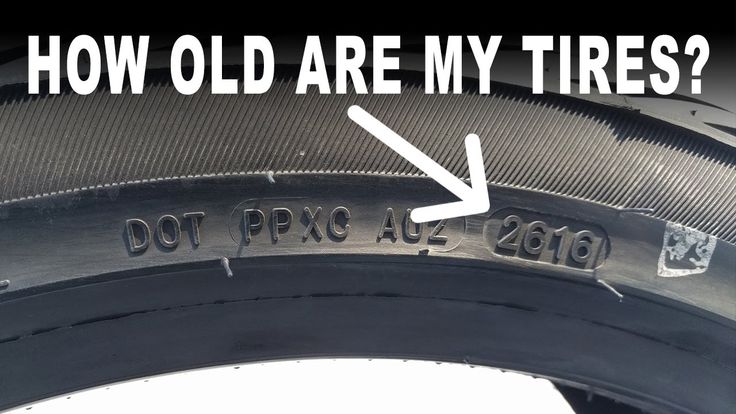 But it is a bit tricky to know the manufacturing year of tires manufactured before 2000.
But it is a bit tricky to know the manufacturing year of tires manufactured before 2000.
You need to check the last three digits of the DOT code. Check the first two digits to know the week. For instance, when the last three digits read 022, you should understand that the tire was manufactured in the 2nd week of that year. You might be thinking about how to know the year. The year is the 2nd year of that decade. It is easy to get confused to know the decade. It might be harder to know the exact decade. There might be some other indications to know the year.
*Image Copyright from kilgoretirecenter.com
What About the Incomplete DOT NumbersIncomplete DOT numbers mean the current DOT regulations demand the complete number to be written on one sidewall only. When you find a few digits on the opposite sidewall, you can check the other sidewall to find the complete DOT number.
Reading DOT Tire NumbersNow you know how to read tire date codes.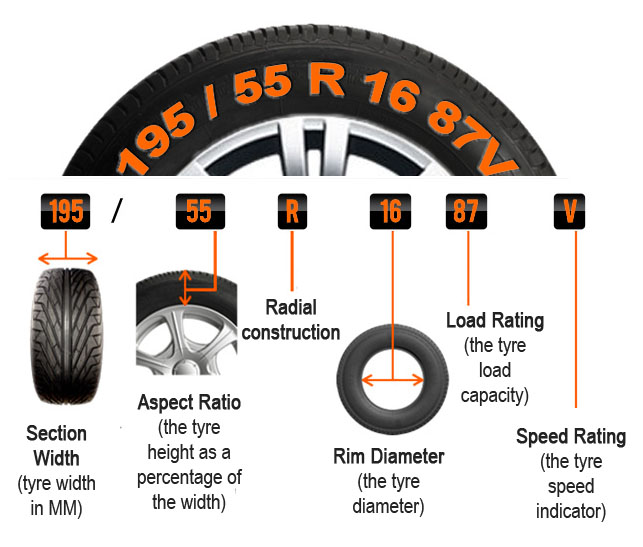 You can simply check at the sidewalls of tires to avoid any further confusion. Also, never lose your purchase receipt. If you do so, you might not get the warranty benefits. So, keep the receipts in a safe place and avoid any confusion by checking the DOT code. Whether you are interested in learning about wheel alignment or more about DOT numbers, our professionals here at Dan the Tire Man can answer your inquiries.
You can simply check at the sidewalls of tires to avoid any further confusion. Also, never lose your purchase receipt. If you do so, you might not get the warranty benefits. So, keep the receipts in a safe place and avoid any confusion by checking the DOT code. Whether you are interested in learning about wheel alignment or more about DOT numbers, our professionals here at Dan the Tire Man can answer your inquiries.
Are you concerned about the age of your tires?
This quick guide will help you find the manufacture date of your tire and understand how Tires Easy handles tire age based on the DOT Code. Keeping a record of your tires and understanding their age will help you save money on repairs and take proper care of your vehicle.
To find your tires’ age, you need to locate the DOT Date Code on the tire. This symbol indicates the tire manufacturer’s compliance with the U. S. Department of Transportation (DOT) National Highway Traffic Safety Administration (NHTSA) safety standards. It tells you who manufactured the tire, where it was made, and other tracking information. Plus, it indicates that the tire has passed the Department of Transportation’s testing and NHTSA manufacturer requirements.
S. Department of Transportation (DOT) National Highway Traffic Safety Administration (NHTSA) safety standards. It tells you who manufactured the tire, where it was made, and other tracking information. Plus, it indicates that the tire has passed the Department of Transportation’s testing and NHTSA manufacturer requirements.
The raised numbers of the DOT Code are placed together and often enclosed in a raised oval. The first two numbers are the week the tire was manufactured. In the example below, 35 stands for “week 35.” The second two numbers are the year the tire was manufactured. In the image below, we see the 07, indicating the tire was build in 2007. This particular tire was made in the 35th week of 2007.
On tires that were manufactured in 2000 and after, the last four digits indicate the week and year the tire was produced. The first two digits identify the week and the second two identify the year.
It’s not always easy to find the tire DOT code.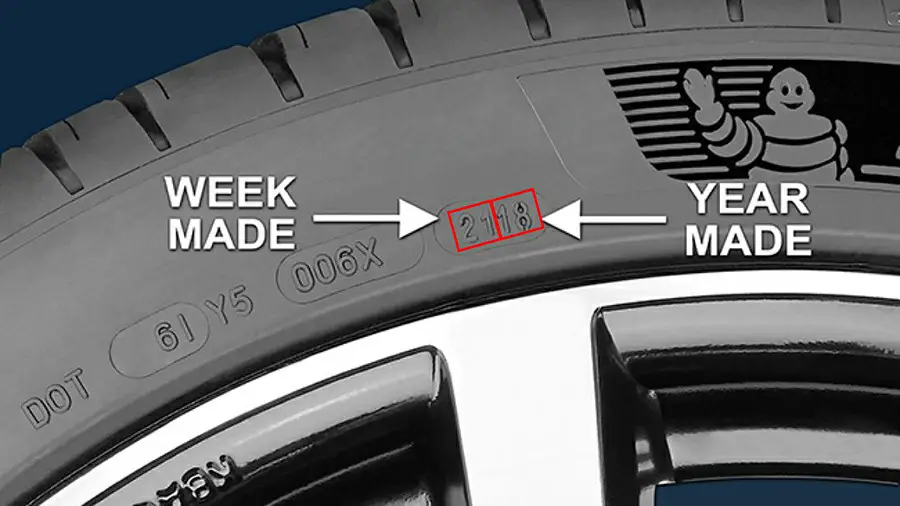 There aren’t regulations on where the manufacturer has to place the information, so you may need to look at multiple sides of your tires before you can find the numbers. However, the identification information is usually on the inner sidewall of tires.
There aren’t regulations on where the manufacturer has to place the information, so you may need to look at multiple sides of your tires before you can find the numbers. However, the identification information is usually on the inner sidewall of tires.
At Tires Easy, we believe that the tire warranty should begin from the date of purchase, not the DOT Code. If you purchase new tires today, and the DOT Code was a year ago, your warranty will still begin on the purchase date, not the manufacture date of the tire.
If for any reason you are uncomfortable with the age of your tires after looking at the DOT Date code, please call us and we can quickly provide you with a return under our 45 day return policy.
Just because you buy “new” tires doesn’t mean they were actually made recently. It can take a while for tires to reach tire retailers after being shipped from the manufacturer.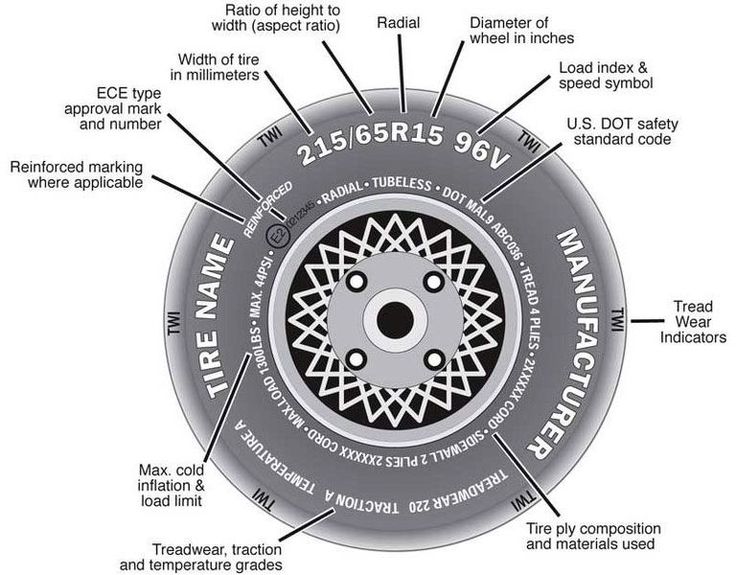 Checking your tires’ DOT Date Code will tell you when they were made and how long they may have been stored. It is important to know that tires are often for months or years at a time, so your tire’s DOT code might not be in the same year you bought the tires, and that’s not a concern.
Checking your tires’ DOT Date Code will tell you when they were made and how long they may have been stored. It is important to know that tires are often for months or years at a time, so your tire’s DOT code might not be in the same year you bought the tires, and that’s not a concern.
At Tires Easy, we take tire protection VERY seriously. Once the tires reach us, they are moved into Tires Easy’s industrial tire warehouses to ensure proper storage and prevent exposure to seasonal weather conditions. Our storage locations are cool, climate-controlled, and dry, preventing any premature aging or damage. Tire aging can be rapidly accelerated by poor storage conditions, so you should be sure the tires you purchase have been properly stored.
A general consensus from various tire industry associations around the world is that tires have a useful service life of six to ten years. As technology changes, there are more materials, and combinations of comounds, to extend tire life and extend wear. At Tires Easy, we like to err on the side of caution and only sell tires that are seven years old and under. If you consider that the average driver travels 15,000 miles per year, most tires need to be replaced in 4 years. If your tires were a few years old when purchasing, you would still be well within the accepted tire age range. This is especially true if the tires receive the proper amount of care and maintenance over the course of their lifetime.
At Tires Easy, we like to err on the side of caution and only sell tires that are seven years old and under. If you consider that the average driver travels 15,000 miles per year, most tires need to be replaced in 4 years. If your tires were a few years old when purchasing, you would still be well within the accepted tire age range. This is especially true if the tires receive the proper amount of care and maintenance over the course of their lifetime.
Legally, you must replace your tires when the tread depth falls below 1.6 mm. Additionally, it’s recommended that you change summer tires at 3 mm and winter tires at 4 mm tread depth. This keeps your tires at optimal levels of safety.
When your tires reach seven years of age, we recommend that you consider replacing them. Even if the tires look new, it is best to have them inspected by a professional tire installer, so they can properly advise on the safety of the tires moving forward. Spare tires should be checked and replaced as well.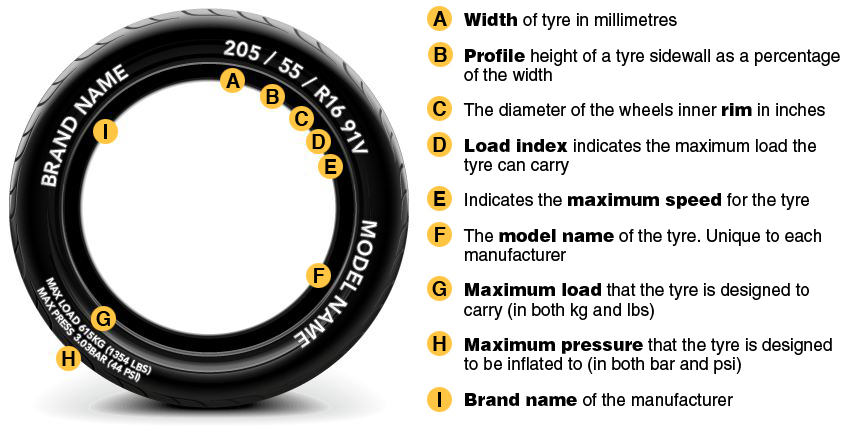
No matter how old the tires are when you buy them, the most important aspect of tire safety is regular maintenance and inspection. According to the The Rubber Manufacturer’s Association of America and the Tire & Rubber Association of Canada.
“Since service and storage conditions vary widely, accurately predicting the service life of any specific tire based on calendar age is not possible.”
For this reason, there is no specific limitation on the age of the tire when it is sold based on its DOT Code.
1. In terms of the DOT Date Code, some might assume that the number states when the tire was approved. On the contrary, the DOT symbol by itself simply indicates that the tire is approved by the Department of Transportation to be legally used on the road. The Date Code is when the tire was manufactured (not when it was approved).
2. You might also have heard that you should only buy tires that have a DOT code within the current year.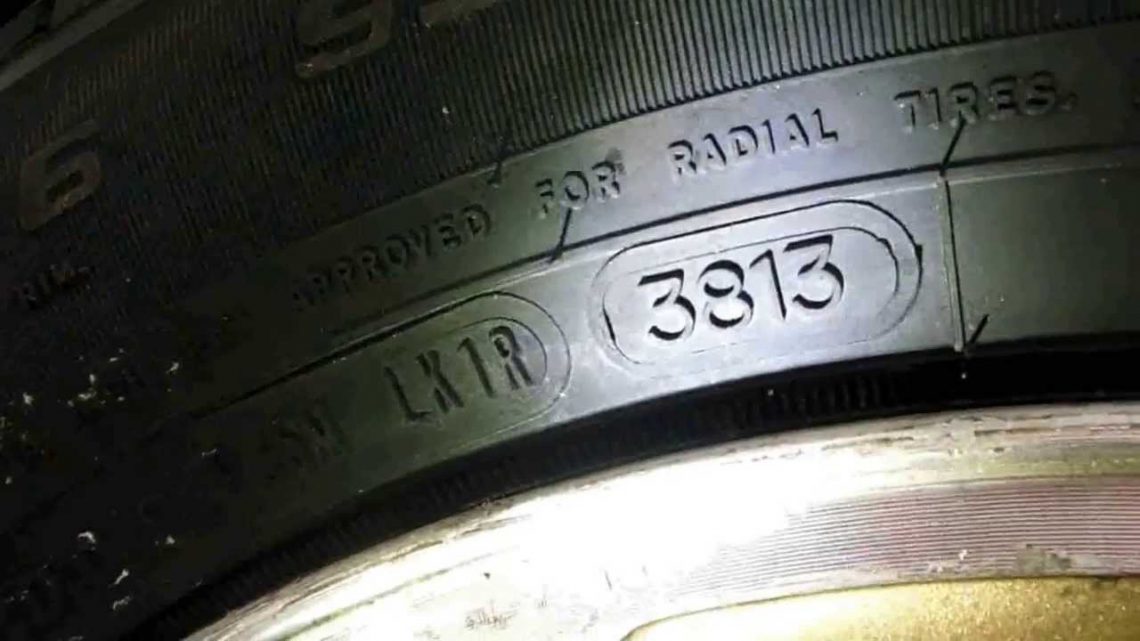 As we mentioned earlier, this is often not the case with many tires simply because it takes time for the tire to reach the United States from the manufacturer. As long as the tires have been stored properly, they will be in excellent condition, even if the DOT Date code is a couple of years old.
As we mentioned earlier, this is often not the case with many tires simply because it takes time for the tire to reach the United States from the manufacturer. As long as the tires have been stored properly, they will be in excellent condition, even if the DOT Date code is a couple of years old.
When stored properly and protected from the elements, tires age quite slowly. The Rubber Manufacturers Association has said there’s no way to put a date on when tires actually “expire.” There are too many factors that impact the true age of a tire.
To help prolong the life of a tire, tire retailers will:
While these are the main contributors to excessive tire aging, it would still take years of exposure in the hottest, wettest, and driest climates for the first signs of tire aging to appear. Tires are durable, and if they’re showing signs of damage within the first few years, it’s a sign of poor quality. Whitening of the rubber and shallow hairline cracks in the upper or lower sidewall may be an indication of UV and heat damage, but these symptoms aren’t issues you commonly see in new tires.
Tires are durable, and if they’re showing signs of damage within the first few years, it’s a sign of poor quality. Whitening of the rubber and shallow hairline cracks in the upper or lower sidewall may be an indication of UV and heat damage, but these symptoms aren’t issues you commonly see in new tires.
Sidewall cracking due to UV rays
Yes, the rubber gets hard over time as the tire loses its elasticity. This happens regardless of how much you use your tires over the course of the years.
Every tire has a birthday, and many tires will not be sold 7 years later. However, since some tires don’t technically become unsafe until a decade after they’re produced, the best advice is to have your tire checked by a professional to make sure they are safe for continued driving.
If you have any questions about your tire’s DOT Code or tire age in general, get in contact and let us assist you!
Create an account for FREE on Tires-Easy. com and discover the Exclusive Member Discounts.
com and discover the Exclusive Member Discounts.
Join Today For Free
Everything has an expiration date, car tires are no exception. How long can they be used? Can you ride tires that are many years old, but they look quite working? Is it worth saving on tires by buying products that have not yet been used, but have been stored in a warehouse for 5-7 years?
Release date is an important parameter when choosing car tires
These questions at least once arose before the majority of motorists. We answer them - in detail and in detail.
The date of manufacture of the tire is always on its sidewall in an oval stamp
Information about when a car tire was produced is placed on its side. You will easily notice an oval stamp with four numbers inside - for example, 1118.
 In our example, this is week 01, that is, January;
In our example, this is week 01, that is, January; So, we have a tire that “saw the light” in January 2003.
Certification of automobile tires for their sale on the Russian market is carried out by the Department of Transport. Tires without age marking, and in a strictly prescribed form, will not receive a quality certificate. This rule is the same for all tire manufacturers.
See also: Tire marking: deciphering the designations on tires
Drivers change cars at least twice a year. As a rule, rubber is operated for several years, and then new tires are bought. At the same time, the tread pattern, raw materials, radius are taken into account, but they rarely pay attention to the release date of the product. But it is this information that helps to better understand the condition of the tires and how long they will last.
You can determine for yourself whether the tires have begun to age. To do this, pay attention to their side. Did you see small cracks here? This is the first sign of aging. Over the years, these scratches will become deeper, and the tire itself will begin to change color, acquiring a whitish tint on the originally black rubber.
In the process of aging, black rubber becomes covered with a whitish coating.
Have you noticed similar symptoms on your car tires? So, it's time to change them - you should not pull further, even if the tread does not look worn out. It is dangerous to drive a car with such tires.
The tire is a mixture of chemical compounds. A number of factors influence it:
Tires can experience different loads, so they have different lifespan, and it is impossible to accurately predict it.
Pay enough attention to the wheels - pay attention to the condition of the tires yourself, and also stop by the service centers. After five years of operation, tire diagnostics should be performed at least once a year.
See also: What pressure should be in the tires?
The aging process is accelerated by three main factors:

It is important to properly store summer and winter tires, protecting them from threatening external factors. By observing the storage conditions, you prolong the "life" of tires - their elasticity remains at an acceptable level for a long time.
Tires are quite picky about storage conditions: in order for them to retain their original properties for a long time, they must be stored properly.
Proper storage is the key to maintaining tire performance.

Storing tires according to the rules is a task that requires control. Therefore, the longer tires lie in stock, the higher the risk that their properties and resources are no longer at that high level.
The properties of tires, their durability and wear resistance largely depend on the quality of rubber. Accordingly, they depend on the manufacturer, who selects raw materials for products manufactured under his brand.
Choose tires from trusted and well-known manufacturers
The largest companies are investing huge amounts of money in the development of unique compounds - they are added to rubber, making it as resistant to aging as possible.
Giving preference to tires from world manufacturers - for example, Nokian, Goodyear or Michelin, you choose high quality, confirmed by time and expert reviews. Under the right conditions of storage and operation, these tires will serve much more than 5 years - their warranty period.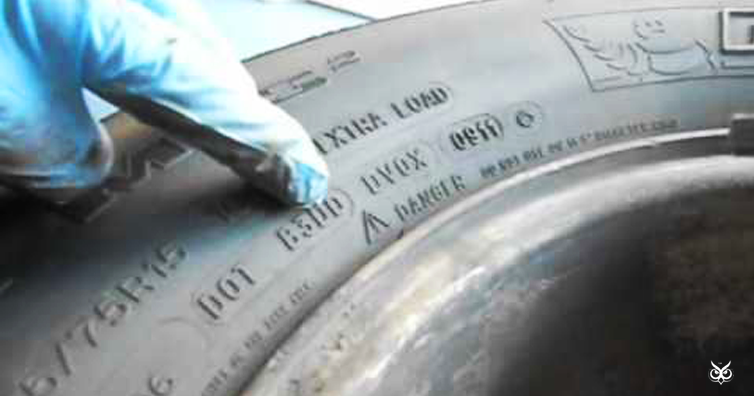
Carefully inspect each tire. Tires should not have any white coating, no scratches, no burrs. Then it is worth checking the products by touch in order to make sure that they are elastic.
Does the appearance of the tires cause any complaints? This indicates that they were stored correctly, therefore, the performance properties are at the proper level.
If you have tires in front of you that are overtaking the symptoms of aging, it's not worth the risk. Such tires will not last long, and you will waste your money.
There are two sets of tires - both from reliable brands, each with a good view? Then choose the one that is "younger". In this case, the guarantee of proper storage is higher.
Don't get too hung up on the age of the tires. For example, tires that have just "knocked" two years, show themselves no worse than products that have just entered the market. But! They must initially be of good quality, that is, from manufacturers whose reputation is beyond doubt. Should inspire confidence and appearance - without cracks and whitish coating. Well, you have the right to ask for a discount on two-year-old tires.
But! They must initially be of good quality, that is, from manufacturers whose reputation is beyond doubt. Should inspire confidence and appearance - without cracks and whitish coating. Well, you have the right to ask for a discount on two-year-old tires.
Expert advice will help you choose the right tires and keep them in working condition for a long time.
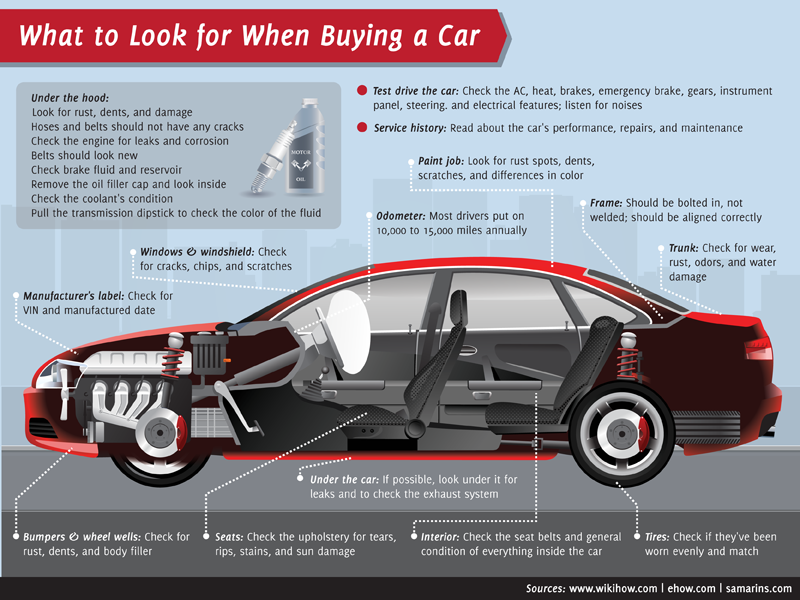 Driving a car with such tires is endangering both yourself and passengers.
Driving a car with such tires is endangering both yourself and passengers. Choose high-quality tires, observe their storage and maintenance conditions - and then they will not let you down.
10 May 2018
No matter how ridiculous it may sound, but you need to choose tires for a car that are "fresh". This applies to both the purchase of new and the purchase of used wheels. After all, the safety and comfort of a trip largely depends on the physical condition of the tires. And they have their own shelf life and operation.
This applies to both the purchase of new and the purchase of used wheels. After all, the safety and comfort of a trip largely depends on the physical condition of the tires. And they have their own shelf life and operation.
Subject to certain rules of packaging, transportation and storage of tires, the manufacturer guarantees the safety of the operational properties of tires for 5 years from the date of production. You can use tires after this period, but with a mandatory check of their condition at the beginning of each season.
Non-observance of storage conditions leads to loss of rubber elasticity. Rubber becomes harder, microcracks appear on its surface. Signs of aging seriously impair tire performance. The possibility of their further use is determined by the buyer himself, based on the technical condition of the tires.
To find out the date of manufacture of the tire, just look at the side surface of the tire. Here, along with other alphanumeric information, there is a four-digit number enclosed in an oval. It is located at the end of the DOT code.
It is located at the end of the DOT code.
Regardless of the country of manufacture and the geography of tire sales, the numerical marking in the oval indicates the week number and year of manufacture of the tire. The first two digits are the production week number. The last two are the year of issue. In our example, the numbers "3706" indicate that the tire was manufactured on the 37th week of 2006, that is, in the first week of October 2006.
A three-digit coding indicates that you have a tire in front of you that was created before 2000. For example, the code "127" indicates that the tire was made in the 12th week of the 7th year. To accurately identify the decade, pay attention to what comes after the number 7. The presence of a space ("127_") or another sign ("127▵") indicates 1997 issue. The absence of a space or signs - for 1987 production.
This complexity in the designation is due to the fact that in the 20th century, tire manufacturers did not expect that their products would be used for more than 10 years. They switched to a more convenient 4-digit marking after 2000.
They switched to a more convenient 4-digit marking after 2000.
Japanese tires enjoy well-deserved popularity in the world. One of the brands, Bridgestone, has been producing a wide range of tires for cars, trucks and sports cars for more than 80 years. Each type of tire bears a standard marking of the rubber production date. The year of manufacture on Japanese tires is indicated on the sidewall, after the DOT marking. Look for the last 4 digits enclosed in an oval. The first two of them are the week number of the tires, the last two are the year of manufacture.
Without exception, all leading manufacturers recommend changing tires if they are 10 years old from the date of manufacture. Rubber older than 8 years is considered potentially dangerous to use.
Many offline and online shops offer to buy tires no older than 3-5 years. Subject to proper storage conditions, this is the optimal shelf life of the wheels without losing their performance characteristics.